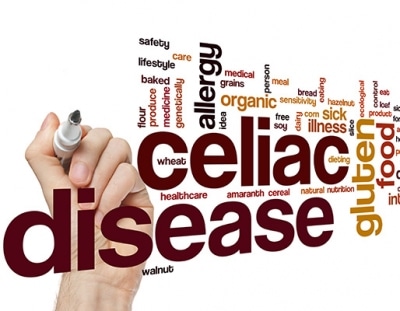Gluten Sensitivity and Celiac Disease: What’s the Difference
Happy October and Celiac Disease Awareness Month!
Celiac disease is on the rise in recent years.
Raising awareness of the differences between celiac disease and other gluten sensitivity disorders is crucial for the future development of treatment.
To help out with symptom differentiation, we decided to share some information with you in one of our articles this month.
At Atrantil, we believe in helping everyone suffering from gut issues.
Giving out important information is the best way we can do that.
Without further ado, let’s dive into the research and separate what exactly celiac disease is, how it differs from other gluten disorders, and some ways you can better deal with symptoms of both.
What is Celiac Disease?
Celiac disease (CD) is an autoimmune disorder that deals with chronic inflammation of the gut when exposed to gluten. Celiac disease — although not commonly grouped in — can be considered an inflammatory bowel disease.
Some of the common symptoms of CD include:
- Chronic diarrhea (usually with weight loss)
- Bloating
- Abdominal pain
- Steatorrhea (oily, very odorous stools)
While most symptoms of CD deal with gastrointestinal issues, there are symptoms and side effects that happen outside of the gut as well. Some of these include:
- Other autoimmune disorders
- Thyroid issues
- Osteoporosis
- Dermatitis
- Stunted growth
- Delayed puberty
- Reproductive issues (infertility, miscarriage, etc.)
Symptomology alone cannot determine whether or not you have CD. Labwork needs to be done to confirm CD.
Lab results will first determine a genetic predisposition to CD. CD is typically a hereditary disease and will be passed down on certain chromosomes.
Approximately 50% of the population carries the HLA gene, but only about 1-3% actually have it develop into CD.
The gene is able to become active at any point throughout your lifespan.
However, the exact reasoning as to why or how it gets activated is still unclear.
Some hypotheses on how the gene can be activated are:
- Physical or emotional trauma
- Viruses
- The hygiene hypotheses (our excessive desire for cleanliness doesn’t allow our bodies to be exposed to the correct bacteria leaving our bodies susceptible to disease)
- Gut dysbiosis
Celiac disease confirmation happens after finding out you have the predisposition.
Once this is confirmed, your gastroenterologist will more than likely do a gastroduodenoscopy and biopsy your duodenum (the part of your small intestines that is affected by CD).
Blood work checking for autoantibodies is another indicator of CD.
These tests can confirm CD and potential development even if you don’t currently have symptoms of it.
What is Gluten Sensitivity and How is it Different from Celiac Disease?
Gluten sensitivity is also a reaction when gluten is consumed.
When you go to the doctor presenting symptoms of gluten sensitivity, they will usually test you for CD and gluten/wheat allergy.
If both of these are ruled out, then you will be diagnosed with gluten sensitivity.
Wheat allergies can present similar symptoms but can also cause hives and anaphylaxis.
These symptoms are unique to wheat allergies and rule out gluten sensitivity.
One difference between CD and gluten sensitivity is that with gluten sensitivity they don’t have the same antibody biomarkers that confirm a CD diagnosis.
CD is an autoimmune disease in which the body attacks itself when exposed to gluten.
This can have severe consequences if not diagnosed and treated.
Many symptoms of gluten sensitivities are similar to CD, such as diarrhea, bloating and other gut issues.
However, gluten sensitivity doesn’t cause an immune response or intestinal damage.
Potential Environmental Causes
Recent studies have come out linking certain pesticides to the rise in CD rates.
While no direct link has been made there are several similarities between exposure to glyphosate and symptoms of CD.
- Dysbiosis
- Dysfunction of cytochrome P450 enzymes
- Specific amino acid depletion (tryptophan, tyrosine, methionine, and selenomethionine)
- Increased risk of non-Hodgkins lymphoma
- Reproductive system problems
More studies need to be done on this, but this could be the main explanation between the differing rates of CD between countries.
Treatments for Celiac Disease and Gluten Sensitivity
One of the main treatment plans — and the most obvious one — is cutting gluten out of your diet.
While this works really well for some people suffering from both CD and gluten sensitivity, others still struggle with symptoms.
Recently this is being linked to the disruption of the intestinal barrier.
Dysbiosis from a compromised intestinal barrier is likely to be the cause of these additional problems that aren’t fixed through diet alone.
The use of prebiotics seems to help with these issues by sealing up the intestinal wall and preventing intestinal permeability.
How Atrantil Can Help Gluten Sensitivity
**DISCLAIMER: Atrantil is not a medication. This article is purely informational and not to replace advice from your professional medical doctor. Atrantil does not claim to treat, cure, or diagnose any disorders or diseases.**
Atrantil was not created for Celiac disease, but it can help in the cases of dysbiosis, caused by gluten sensitivity, that aren’t helped with diet change alone.
The way Atrantil works for other forms of dysbiosis is how it is believed to help with gluten sensitivities.
Peppermint leaf is used to help calm down the inflammatory response seen with all inflammatory bowel diseases.
With the inflammation down, the other ingredients can go about doing their business of repairing and fighting the root problem: methane production.
Methane production is tested for through hydrogen breath tests.
With gluten sensitivity issues, it was found that there are high emissions of hydrogen when hydrogen breath tests were done.
As we have seen with SIBO/IBS, this is due to methane production in the gut.
Zonulin — a protein that controls the permeability of the intestinal barrier — may be directly affected by methane levels in the gut.
Zonulin is often found to be excreted at high levels in mucosa and blood samples of CD patients.
Quebracho Colorado — one of the three ingredients in Atrantil — was specifically used to soak up methane in the gut.
When the methane is no longer floating around in the stomach, symptoms like bloating, gas, and pains are calmed down.
It is understandable why so many people with gluten sensitivity seem to have great results from taking Atrantil!
Those with gluten sensitivity typically take 2 capsules of Atrantil when eating trigger foods or right after eating trigger foods and can relax without worrying that they will experience those awful symptoms.
If you suffer from gluten sensitivity ask your primary care physician if Atrantil could be right for you! If you get the go-ahead from your doctor, you can find a store that sells Atrantil near you here.
https://www.ncbi.nlm.nih.gov/pmc/articles/PMC3706994/
https://www.ncbi.nlm.nih.gov/pubmed/26260366
https://www.nature.com/articles/nrgastro.2015.136
https://www.ncbi.nlm.nih.gov/pmc/articles/PMC4596973/#__sec51title
https://www.ncbi.nlm.nih.gov/pmc/articles/PMC3945755/
https://www.ncbi.nlm.nih.gov/pubmed/26725064


